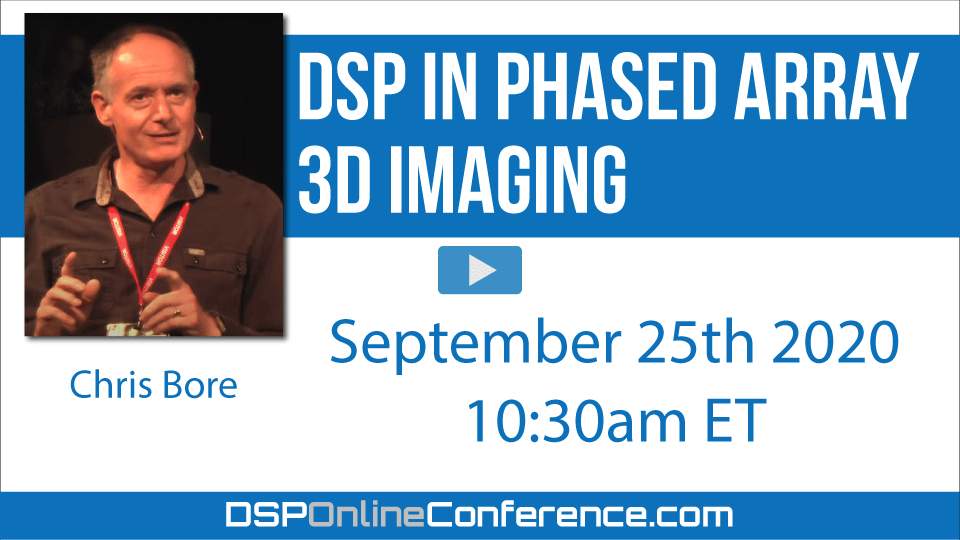Home > On-Demand Archives > Talks >
DSP in Phased Array 3D Imaging
Chris Bore - Watch Now - DSP Online Conference 2020 - Duration: 29:03

Phase is often the poor relation to magnitude in Fourier Transform analysis but can be the crucial measurement in some applications. Such is the case with phased array methods for imaging: in radar, security and medical imaging applications. The key to such applications is physics modelling and measurement of phase to reconstruct wave propagation and hence reconstruct 3D or 4D images of reflecting, refracting or scattering objects. This talk offers an overview of phased array imaging from the viewpoint of DSP, modelled as a 3D Fourier or Laplace Transform problem.
Very nice perspective! Excellent!
Nice one.
Glad you enjoyed it
Hi Chris, You need come out of retirement :-) Though you obviously solved the resolution problem, would a frequency chirp instead of fixed frequencies have any benefits or issues?
Also, the VNA approach preserves all the data, despite the high frequencies, and so we can go back and do different reconstructions on processing on the raw data set, which you couldn't practically do with time domain because you normally reduce the data
Hello Brewster, nice to see you!
The chirp might allow faster data gathering but it loses the direct frequency domain data gathering: which does not suffer from Gibbs phenomenon and all that, because we actually do measure each frequency in CW.


Good and informative
myinsite